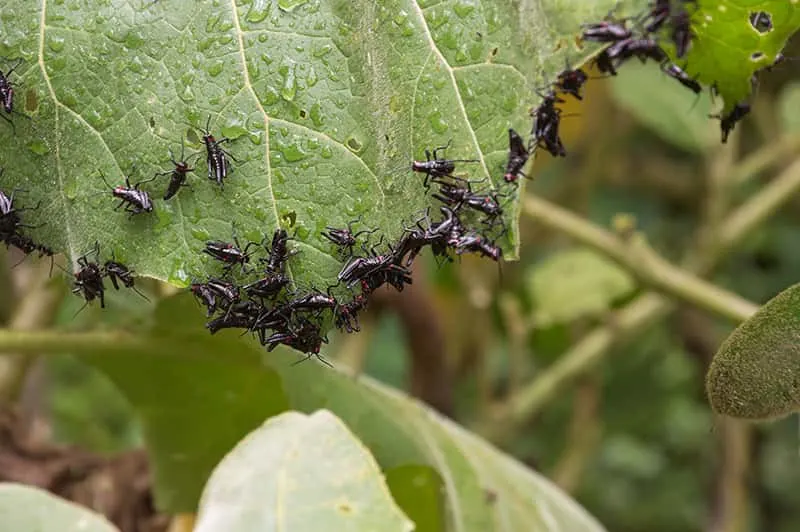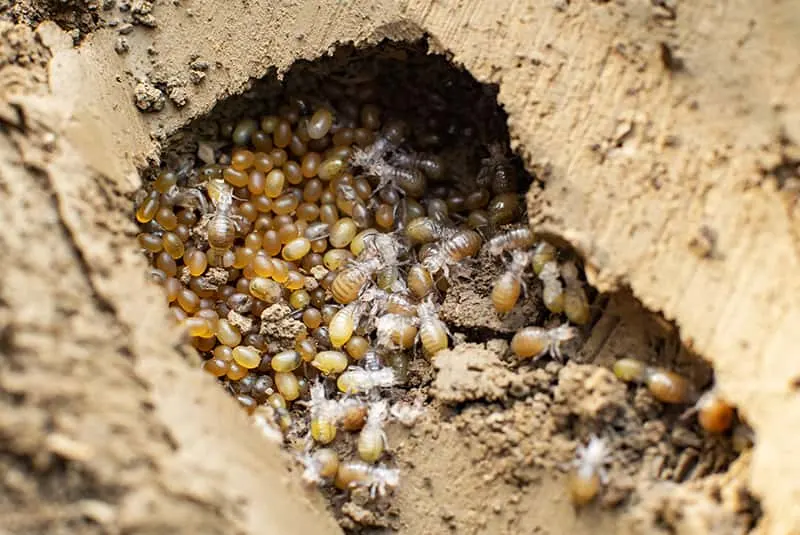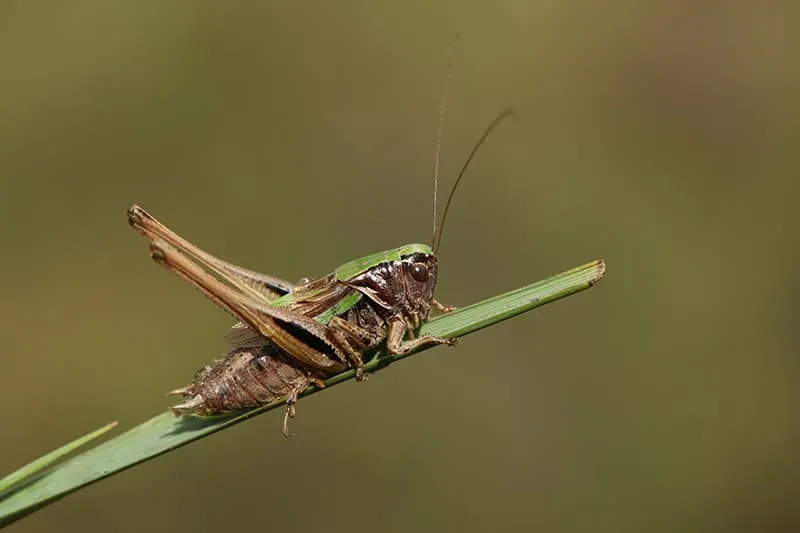Want to learn some interesting facts about crickets? Learn all about crickets in this post! We will be talking about their physical description, habitat, chirping, and more!

Physical Description
A cricket has a round head with two antennae. The body is tube-shaped with three jointed pairs of legs. Crickets have two pairs of short walking legs. The two jumping legs are longer and thicker than the walking legs.
Most crickets have four wings that lie flat against their bodies. Two tiny appendages called cercus protrude from a cricket’s abdomen.
A cricket’s exoskeleton can be any color, from yellow to green to brown to black. Crickets can be one color or a mix of colors. They may have markings such as bands, spots, or stripes. Crickets range in size from less than an inch to two inches.
Habitat
Crickets live on all continents except Antarctica. Crickets can be found in many environments. Woodlands, grasslands, rainforests, beaches, and fields are some of these environments.
Crickets can be found in a variety of habitats. Wood piles, rock piles, natural debris, vegetation, trees, and caves are examples of these. Crickets are also typically found in the nooks and crannies of buildings and houses.
Habits
Crickets are nocturnal. During the day, they hide in dark and warm locations. They become active at dusk. Crickets are usually heard before they are seen. Male crickets chirp by rubbing their front wings together. Their forewings are made of chitin and have ridges. These make a noise when they are rubbed quickly together.
Male crickets chirp “songs” to attract females or defend territory. Male crickets sing to females in their territory. Once a male gets the attention of the female, he changes his chirping to a different song.
Sometimes two male crickets try to get the attention of one female cricket. One male cricket will interrupt the other male cricket's chirping song with his own. They battle with chirping songs to win the female's affections. The number of chirps is affected by the temperature. The hotter it is, the faster a male cricket will chirp.
A cricket becomes dormant and slows down its metabolism if it gets too cold. If crickets stay dormant for too long, they die. Some cricket species can survive in a dormant state for a week in below-freezing temperatures. Different cricket species have different tolerances for the cold.
Diet

Different species of crickets eat different things. Some cricket species are herbivores. They eat plants and flowers. Other crickets are scavengers. They eat decaying vegetation. Some crickets are omnivores. They catch and eat creatures like insects.
Offspring
Crickets usually mate with multiple partners in the spring. Females typically lay eggs once in their lifetime. They lay eggs in nesting areas in damp and humid places. Examples of these locations are dirt burrows, vegetation, and indoor plumbing.
A female cricket lays between one hundred and three thousand eggs. A cricket has three life stages in its life cycle. These stages are egg, nymph, and adult.
The cooler the climate, the longer it takes for larvae to hatch. In warm environments, the larvae hatch within two weeks. The cricket larvae are in the nymph stage when they hatch.
Baby cricket nymphs look like tiny crickets without wings. A nymph goes through several stages of molting. As it outgrows its exoskeleton, the exoskeleton cracks. The nymph then sheds the exoskeleton. Its new skin hardens into a new exoskeleton.
Cricket nymphs molt about ten times in a two-to-four-week period. The nymph will have grown into an adult cricket after the molting cycle. The cricket develops wings after the molting cycle is completed.

Classification/Taxonomy
Kingdom: Animalia
Phylum: Arthropoda
Class: Insecta
Order: Orthoptera
Family: Gryllidae
Genus: Acheta
History
Insects first evolved more than four hundred million years ago. Scientists discovered that three hundred million years ago, crickets were the first species to communicate. We believe cricket ancestors lived during the Jurassic period when dinosaurs roamed the earth.
Predators
Crickets have too many predators to count. Among these are birds, spiders, reptiles, rodents, bats, and other insects. Over the last twenty-five years, cricket populations have declined by 75%. The main reason is habitat loss.
Natural habitats are removed as land is cleared for crops and construction. There are more than one hundred and fifty species of cricket listed as “endangered” on the IUCN Red List.
Lifespan
The lifespan of a cricket varies based on the species. Most cricket species only live for a few months. Certain species can survive for up to two years in the wild. Crickets that are kept as pets typically survive for up to a year.

What Sound Does a Cricket Make?
Click on this audio file to hear what a cricket sounds like.
25+ Fascinating Facts about Crickets
- The scientific name for a cricket is “Acheta domesticus”.
- There are over 900 species of crickets.
- Some crickets can fly.
- Crickets can bite and transmit diseases.
- Some crickets dig small burrows in the dirt to hide and live in.
- Crickets’ compound eyes provide them with excellent eyesight.
- The temperature (in Fahrenheit) may be calculated by counting the number of chirps produced by a tree cricket for 14 seconds. Adding 40 to this number gives the approximate temperature.
- The temperature (in Fahrenheit) can be estimated by counting the number of chirps heard by a tree cricket for 14 seconds. Adding 40 to this number gives the temperature.
- Female crickets do not chirp or fight.
- Crickets do not chirp by rubbing their hind legs on their wings like grasshoppers do.
- Male crickets sometimes fight over females.
- Male crickets that do not chirp to compete with other males tend to live longer.
- Crickets in captivity can change their diet to become omnivores.
- Crickets are half the size of grasshoppers.
- Crickets have much longer antennae than grasshoppers do.
- Crickets have long been associated with good luck in folklore.
- Cricket fighting is a traditional sport in China that involves the combat of male crickets.
- In China, the cricket is a popular traditional pet.
- Adult crickets can survive for 2 weeks without food or water.
- An “instar” is the period between a cricket nymph’s molting stages.
- A female cricket has a long tube-like organ called an “ovipositor” that she uses to lay eggs.
- The largest cricket species is the bull cricket. It can reach a length of two inches.
- The smallest cricket species is the Pygmy field cricket. It is 3/8″ long, or about the size of a dime.
- A giant weta is not a cricket.
- Field crickets are among the most common crickets found in people’s homes.
- The house cricket is known for invading homes in winter and eating a variety of things.
- Fried crickets are a popular food in Thailand.
- The cricket gets its name from the sound it makes.
- Crickets and grasshoppers share a common ancestor.
We hope you enjoyed learning all about crickets! Did you learn anything new? Let us know any other facts you know about them. We can’t wait to hear from you!
Here are some fun insects that you might want to learn about.
